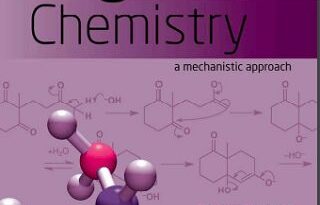Forensic Engineering Fundamentals
Download Free PDF book on “Forensic Engineering Fundamentals” by Harold Franck and Darren Franck. Forensic engineers often specialize in a particular area such as structures, fires, or accident reconstruction. However, the nature of the work often requires broad knowledge in the interrelated areas of physics, chemistry, biomechanics, and engineering. Covering cases as varied as assessment of workplace accidents to the investigation of Halliburton in the BP oil spill, Forensic Engineering Fundamentals is a comprehensive introduction to the many diverse facets of the field that forensic engineers must be familiar with in their practice.
| Book Name | Forensic Engineering Fundamentals |
| Author | Harold Franck and Darren Franck. |
| Category | Chemistry |
| Book Language | English |
| Publisher | CRC Press |
| Pages | 479 |
| ISBN | 978-1-4398-7840-8 |
| Country | United Kingdom |
| Book Size | 5.77 MB |
Forensic Engineering Fundamentals PDF Download
Forensic engineering is the systematic investigation of materials, products, structures, or components that fail to function as intended, leading to personal injury, property damage, or economic loss. The primary objective is to determine the root cause of such failures to prevent future occurrences and, when necessary, provide expert testimony in legal proceedings.
Core Principles of Forensic Engineering:
-
Scientific Method Application: Investigations are grounded in the scientific method, involving hypothesis formulation, empirical testing, and analysis to derive objective conclusions.
-
Interdisciplinary Approach: The field integrates knowledge from various engineering disciplines—including civil, mechanical, electrical, and materials engineering—as well as physics and chemistry, to comprehensively assess failures.
-
Failure Analysis: This entails examining failed components to identify the mode and cause of failure, such as fatigue, corrosion, or design flaws.
-
Root Cause Analysis: Beyond identifying the immediate cause, forensic engineers delve into underlying factors, considering design processes, material selection, manufacturing practices, and operational conditions.
-
Legal Interface: Findings often contribute to legal cases, necessitating clear communication of technical information to non-specialist audiences, including juries and legal professionals.
Common Areas of Investigation:
-
Structural Failures: Analysis of building or bridge collapses to determine contributing factors.
-
Mechanical Failures: Examination of machinery or vehicle component malfunctions leading to accidents.
-
Electrical Failures: Investigation of electrical system malfunctions that may cause fires or equipment damage.
-
Material Failures: Study of material defects or degradation resulting in product failure.
Educational Resources:
For a comprehensive understanding, the following resource is highly recommended:
-
“Forensic Engineering Fundamentals” by Harold Franck and Darren Franck: This book offers an in-depth introduction to the diverse facets of forensic engineering, covering topics from structural distress to accident reconstruction.
By adhering to these principles and continually engaging with educational materials, professionals in forensic engineering can effectively investigate failures and contribute to enhancing safety and reliability across various industries.
Contents



